The DENALI catalysts, manufactured by the new GRANITETM technology, represent the newest products family developed under the technological partnership between KETJEN, FCC S.A. and PETROBRAS. The DENALI catalysts family results from several years of activities in several R&D projects to reach the goal of same TOPAZ products bottoms conversion with advantage in coke selectivity.
The DENALI catalysts exhibit two features that differ from the TOPAZ catalysts:
a) New binding matrix;
b) New ultra-stabilized Y zeolite technology.
The new ADMTM-85 binding matrix was introduced to optimize the pore distribution in the catalyst and improve the Y zeolite acidic sites stability when the product is submitted to the typical conditions of the FCC unit regenerator. Besides the features cited above, the new matrix further provides additional binding capacity, securing the catalyst particle higher mechanical resistance, which can be used to increase the active ingredients content and further improve the performance.
The new technology for zeolite Y ultra-stabilization was developed for this ingredient to modify the cracking products profile with significant coke yield reduction. The new ADZTTM-600 zeolite developed with the aid of this technology is produced under specific operating conditions to secure improved stability and micropores retention, providing equilibrium between activity and hydrogen transfer. In this way, the active sites of this kind of zeolite are optimized, favoring the lower coke yield. Besides, the new zeolite exhibits relevant differences in terms of pore distribution relative to the conventional zeolite (Figure 1), providing easier access to the acidic sites.
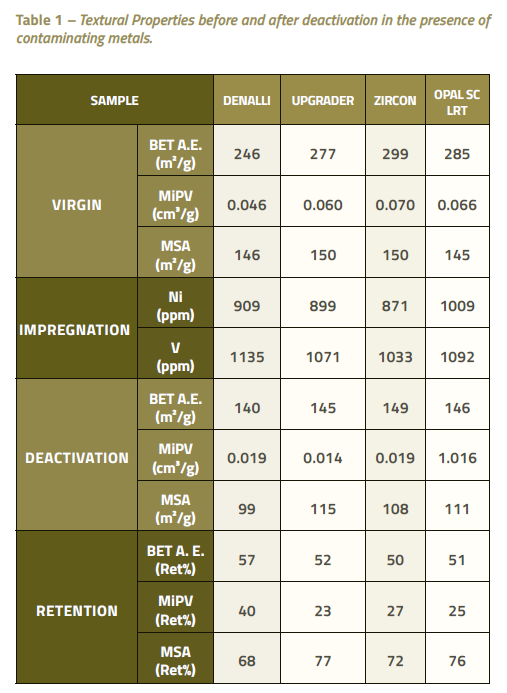
Aiming at completing the development cycle of the new DENALI catalysts technology, a domestic feed commercial sample of the product was submitted to performance tests at the PETROBRAS CENPES R&D Center in lab scale and pilot plant scale for direct comparison with the TOPAZ catalysts consumed in the PETROBRAS refineries. The TOPAZ catalysts have been successfully employed to maximize conversion by means of reduced bottoms product yield. However, a high accessibility catalyst systems improvement opportunity has been observed, with better coke selectivity, enabling to reach the maximum profitability potential.
Table 1 lists the textural properties of virgin catalysts and after the metal impregnation and deactivation steps in fluidized bed units. Relative to the TOPAZ catalysts, represented in this comparison by the UPGRADER, ZIRCON and OPAL SC LRT catalysts, the DENALI catalyst exhibited advantages related to micropores retention volume (MiPV). Such property is directly related to the zeolite catalyst area, which pointed out that the new ADMTM-85 matrix, associated with ADZTTM-600 zeolite imparts higher protection to the active sites of the zeolite, the main catalyst component.
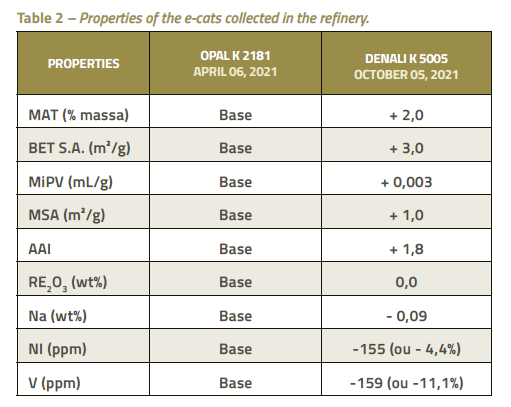
Figures 2 and 3 illustrate the results for coke and clarified oil yield (CLAO), this being the bottoms product of the commercial cracking unit (FCCU) for the tests in laboratory cracking unit (ACE), while Figures 4 and 5 relate to products yields obtained in a pilot scale cracking unit (DCR). Performance data analysis, both in lab scale and pilot plant scale were fully favorable to the DENALI catalyst, demonstrating the expected improvement in coke selectivity related to all the tested TOPAZ technology products, with bottoms conversion (as represented by the yield in CLAO) at least similar, resulting in higher bottoms conversion at constant coke yield (Figure 6). A further advantage of the DENALI catalyst observed in the pilot plant scale test was the higher cracked Naphtha octane (Figure 7).

Based on these results the DENALI catalyst technology (with the same formulation as that tested at PETROBRAS CENPES R&D Center) was approved for a commercial test in a PETROBRAS gasoil cracking unit, since a relevant improved performance opportunity was spotted for this unit through the utilization of a better coke selectivity catalyst system.
After planning detailed by the PETROBRAS CENPES R&D Center and FCC S.A., the DENALI catalyst industrial production for refinery supply was obtained in March 2021. The DENALI product met all the established specifications and the lab scale performance analysis demonstrated that the results exhibited by the catalyst manufactured at FCC S.A. were similar to those obtained in the test period.
The new catalyst system with the DENALI catalyst (DENALI K 5005) replaced the OPAL K 2181, as demonstrated below:
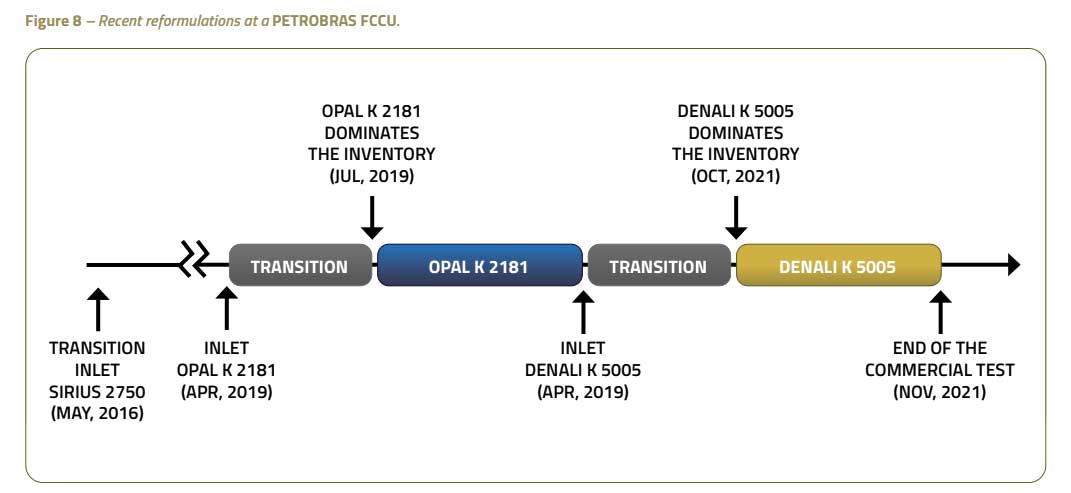
The DENALI catalyst replaced the UPGRADER catalyst, which represented nearly 50% of the inventory in the OPAL K2181 system. The amounts of the remaining components relative to the previous catalyst system were kept as such. The new DENALI K5005 system was forwarded to the refinery on May 19, 2021, being added definitively to the FCC unit in June and started to dominate the unit inventory on October 4th, 2021 (75% exchange).
Different statistical techniques such as Clusters analysis and Neural Networks modelling were used to determine the new catalyst system performance analysis. Besides, a test was performed under pre-set operating conditions in order to allow direct comparison with the previous catalyst system domination period.
During the statistical evaluation by forming groupings, unit data for formation of two Clusters were used. Both Clusters exhibited some independent variable having deviation higher than that set forth in the PETROBRAS catalysts commercial analysis standards. The main differences were total feed flow rate, coke heavy gas oil flow rate (GOPK) and Vanadium content in the equilibrium catalysts (e-cats). Generally, both Clusters showed similar results by comparing the DENALI catalyst-containing catalyst system with the previous catalyst system: reduction in the regenerator dense phase temperature (DPT); increased bottoms conversion directed to higher LPG yield (chiefly) and cracked Naphtha.
The Neural Networks statistical analysis has shown consistent results for the studied dependent variables. This statistical analysis consists in utilizing all the data validated in the unit in the creation of mathematical models (Neural Networks) for each of the interest variables (DPT, conversion, cracked Naphtha yield, etc.) discriminating the effects of the catalyst used relative to the process remaining independent variables. Neural Networks were built to calculate the deviation (catalyst System with DENALI – Base catalyst System) for the chosen dependent variables. Figure 9 details some results for variable deviations calculations studied with the aid of the Neural Networks technique.
According to the Networks results, the change in catalyst system resulted in maintenance or a slight increase in DPT and delta coke, differing from the Clusters analysis, showing that the unit operation team had explored the thermal clearance provided by the new catalyst system for increased severity and higher bottoms conversion. It should be noted that the unit started to operate at higher reaction temperature and higher GOPK content in the feed, containing higher carbon residue than the main feed (direct distillation gas oil), without significant DPT modification, confirming the projection of better coke selectivity for the DENALI catalyst relative to the TOPAZ catalyst as indicated by the bench scale and pilot scale analyses. Summarizing the results, it can be seen that the Neural Networks analysis pointed to increased bottoms conversion directed towards augmented LPG yield and, chiefly, cracked Naphtha and reduced LCO yield.
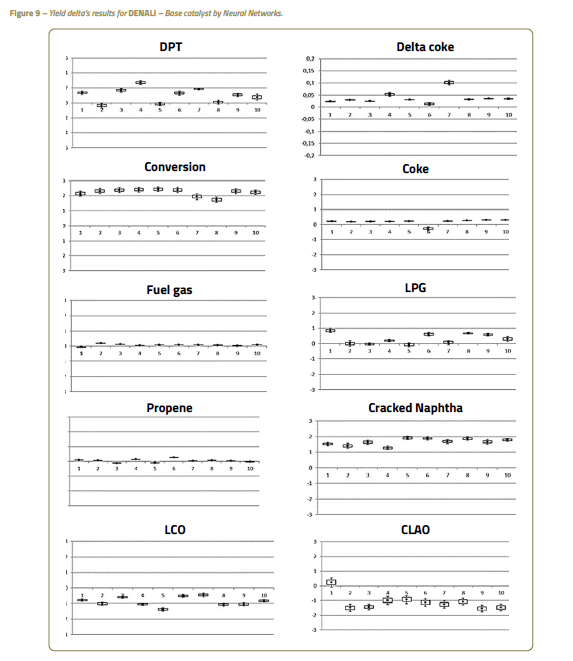
For the test under operating conditions designed for a direct comparison between the new catalyst system and base catalyst period, all the conditions set forth for the test were met by the refinery team, exception made to the feed quality (RCR and density) which, in this case, could have provided some advantage to the DENALI catalyst system. In spite of the difference in feed quality, the comparison results obtained during the test were coherent with other comparisons made with commercial data in terms of yield profiles and higher clearance in the unit energy balance.
Based on the data tests, a simulation with the FCC SimTM software was also run for calibration and economic optimization. The simulation determined the highest profitability level by rising the virgin catalyst make-up, exploring the thermal clearance and advancing in bottoms conversion for increased cracked naphtha and LPG, exacerbating the LCO yield reduction.
Besides the methodologies described above for obtaining performance comparison between the catalyst systems studied, equilibrium catalyst samples of the base catalyst and the new catalyst system with DENALI catalyst were collected for lab scale performance tests at the PETROBRAS CENPES R&D Center. The properties of the analyzed e-cats can be observed as delta’s relative to the base case in Table 2. The main advantages of the DENALI catalyst e-cat are the higher MAT activity, higher accessibility (AAI) and lower sodium content. As regards the contamination with nickel and vanadium metals, the DENALI e-cat exhibited slightly lower values, this not being considered relevant for the performance analysis.
In performance comparisons effected in ACE lab units the e-cat of the period of time with DENALI catalyst also showed advantages relative to the base case e-cat, viz. increased bottoms conversion directed to increased LPG yield, and mainly, cracked naphtha, with similar LCO yield. The results were generally similar to those obtained with the Clusters and Neural Networks analysis techniques and performance tests under conditions similar to that of the previous catalyst system.

Table 3 shows the comparison between the yield delta’s for products projected before the refinery test and the delta’s obtained with some of the applied performance analysis techniques.
Based on the obtained results it is reasonable to state that the catalyst obtained by the new DENALI technology exhibited the expected change in products yield profile for most of the analyses applied, the main advantage being the increased unit bottoms conversion for increased LPG and cracked naphtha yield and slight LCO yield reduction. As projected, the introduction of the DENALI catalyst, when compared under similar conditions with the previous catalyst system (test under similar conditions) aided in reducing the regenerator dense phase temperature, providing a thermal clearance useful for increased unit conversion, as could be observed from the Neural Networks results.
Taking into consideration all of the applied techniques, the neural networks analysis was considered the most reliable of the performance comparison because of the utilization of a huge unit data amount.
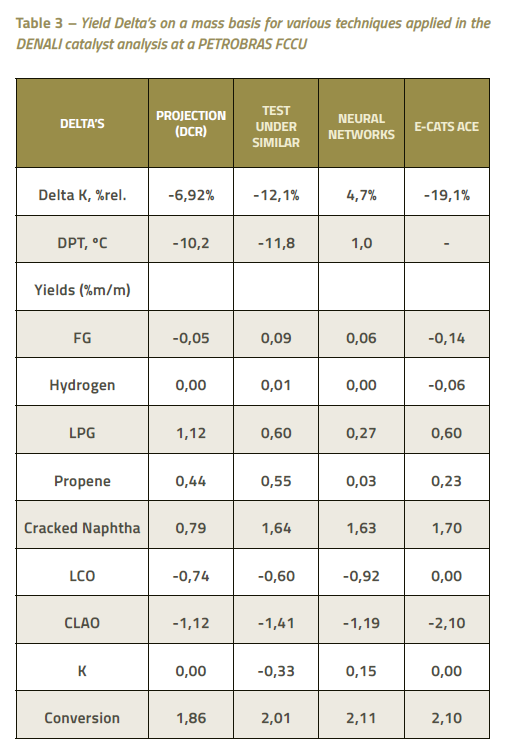
The overall result of the new catalyst system with DENALI catalyst commercial test in a PETROBRAS FCCU was highly positive, since it showed profitability gain, chiefly because of reduction in bottoms product (CLAO) and increased cracked naphtha yield, besides improvement in octane naphtha. Such improvement in cracked naphtha quality is particularly relevant since it allows higher incorporation of direct distillation naphtha, of lower added value, to the gasoline pool while aiding the refinery in anticipating compliance with the new octane RON specification, launched on January 2022.
Besides the operating and profitability aspects, the environmental aspect of the DENALI catalyst was observed in a commercial unit, relative to particulate matter emission. During the test the particulate matter accumulation in the third stage cyclones, the amount of particulate matter (ashes) present in CLAO, the catalyst level in the regenerator, and the catalyst granulometric distribution in the unit were monitored. After inspection during the test, it could be concluded that the DENALI catalyst did not cause any observable change in these variables and the new technology was also approved under the environmental aspect.
As relates to the applicability of the DENALI technology, the confirmation of the good results obtained in the commercial tests proved that the new catalyst has potential for application in other PETROBRAS cracking units, chiefly in 6 of them where they can benefit, at different degrees of relevance, from the DENALI catalyst better coke selectivity.
The new DENALI catalysts family with a new matrix and ultra-stabilized zeolite exhibited excellent results in commercial scale in terms of coke selectivity and bottoms conversion, becoming the new benchmark for this application at PETROBRAS. Thus, this new catalyst solution has good potential to leverage the FCCUs profitability.



























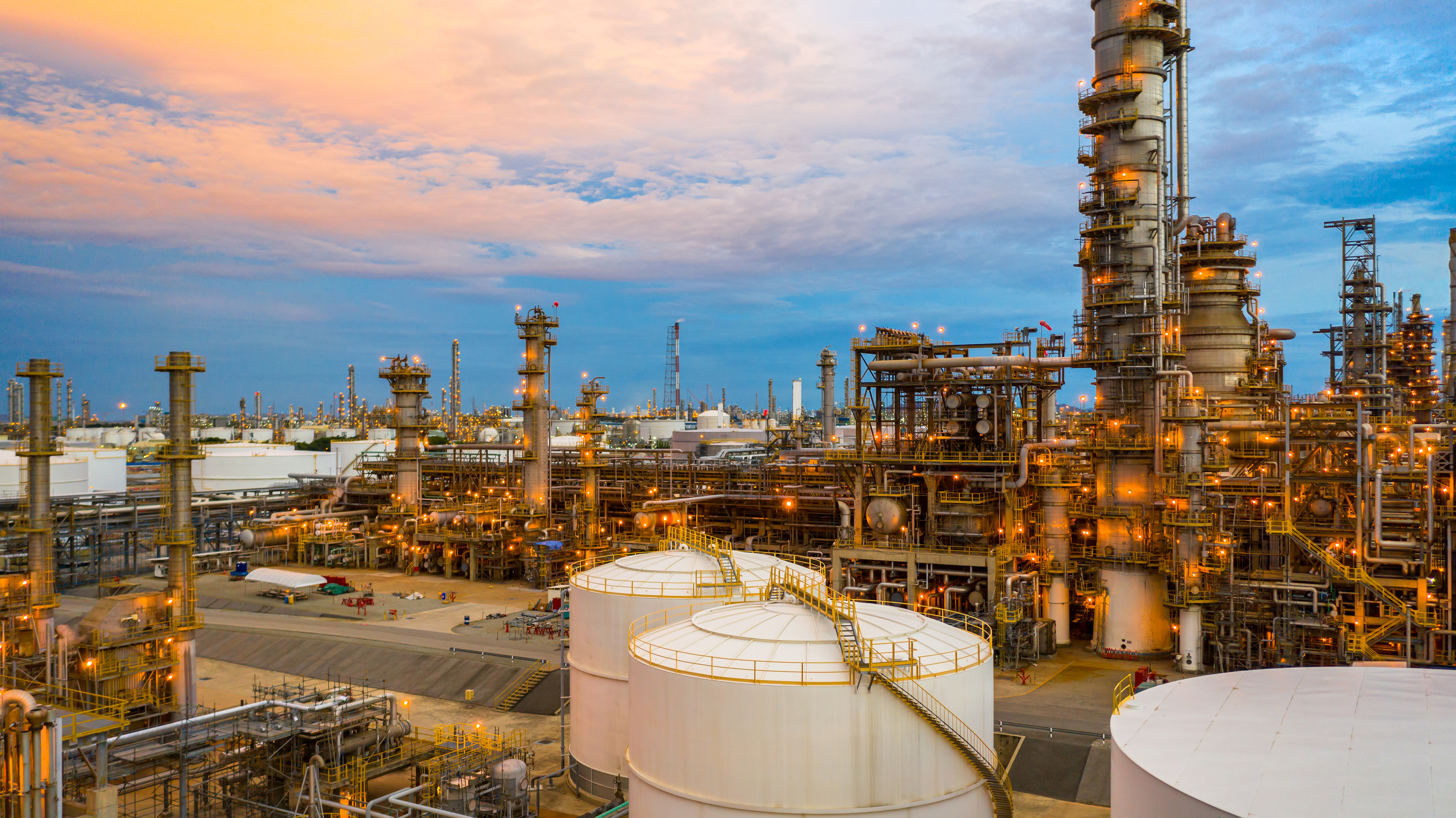
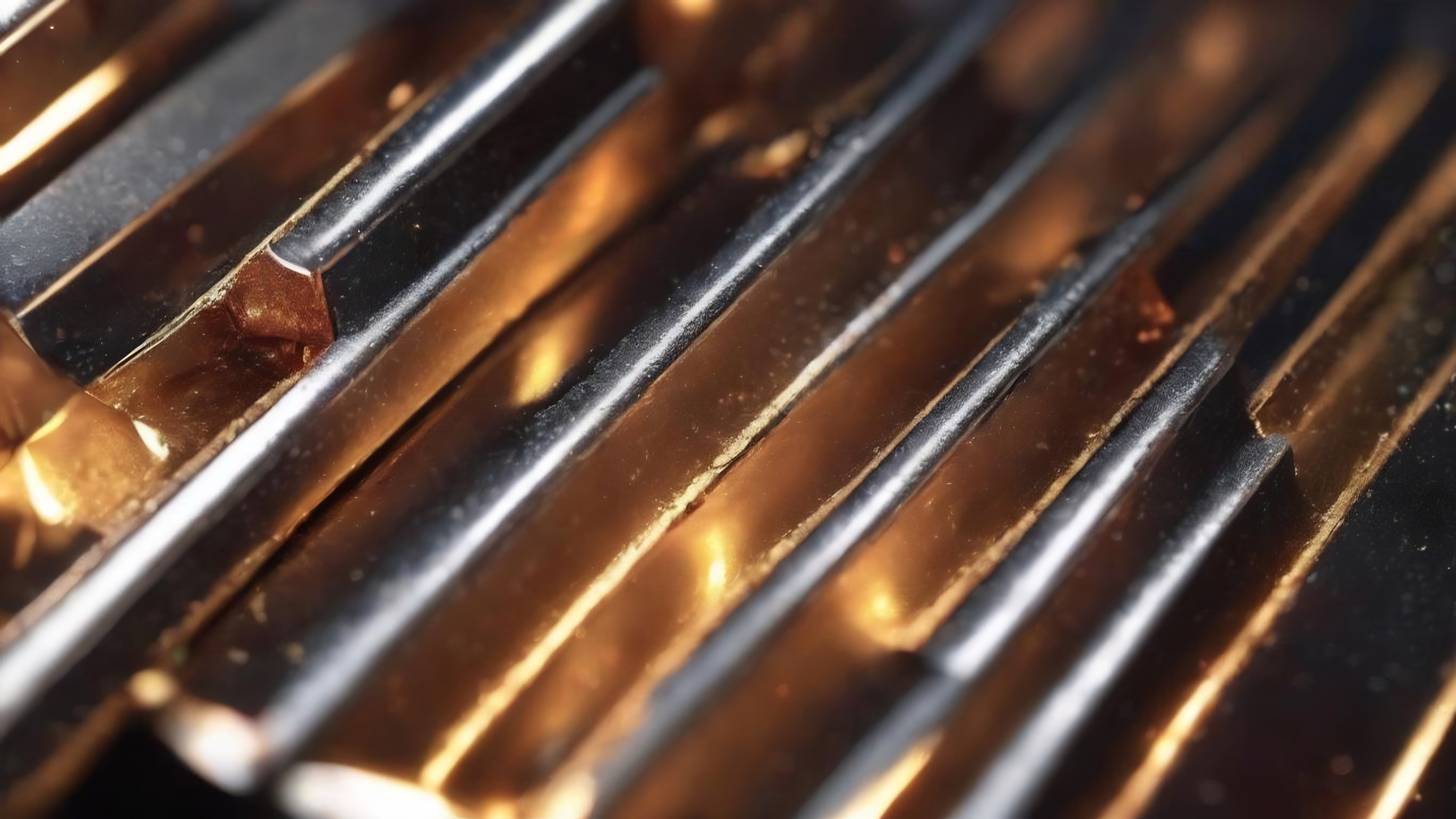







What did you make of the publication?